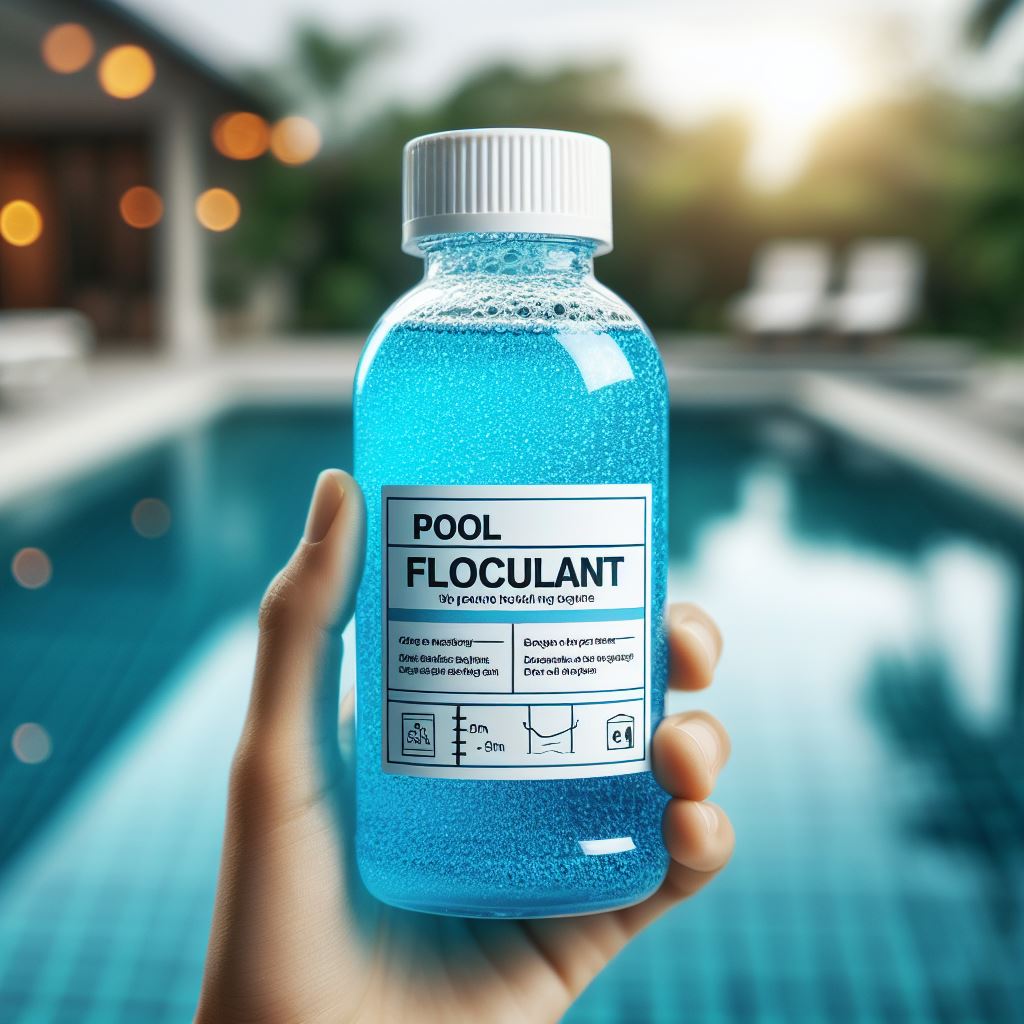Maintaining crystal-clear water in swimming pools is essential for an enjoyable and hygienic swimming experience. However, pool water often becomes cloudy due to the presence of suspended particles and impurities. Flocculant settling is a process used to clarify pool water by aggregating and removing these particles through sedimentation. This article explores the mechanism and benefits of flocculant settling in swimming pools, highlighting its role in achieving pristine water clarity.

Understanding Flocculant Settling
Flocculant settling is a water treatment process that involves the use of flocculants to coagulate suspended particles and impurities in pool water, allowing them to settle to the bottom of the pool. Flocculants are chemical compounds that cause fine particles to clump together, forming larger aggregates known as flocs, which can be easily removed through filtration or vacuuming.
Mechanism of Action
When added to pool water, flocculants form positively charged ions that neutralize the negative charges on suspended particles, allowing them to come together and form flocs. As these flocs grow in size, they become heavier and settle to the bottom of the pool under the influence of gravity, effectively removing suspended particles and impurities from the water column.
Benefits of Flocculant Settling
a. Enhanced Water Clarity
Flocculant settling significantly improves water clarity by removing suspended particles that cause cloudiness and turbidity. The process results in visibly clearer and more transparent pool water, enhancing the aesthetic appeal of the pool and creating a more inviting environment for swimmers.
b. Improved Filtration Efficiency
By agglomerating fine particles into larger flocs, flocculant settling enhances the efficiency of pool filtration systems. The larger flocs are easier to capture and remove through filtration, leading to improved filtration performance and reduced strain on filtration equipment.
c. Reduced Chemical Usage
Clarifying pool water through flocculant settling reduces the reliance on chemical sanitizers and clarifiers, as the process effectively removes suspended particles without the need for excessive chemical treatments. This results in lower chemical usage and maintenance costs while promoting a more environmentally friendly approach to pool water treatment.
d. Faster Water Clarification
Compared to traditional filtration methods alone, flocculant settling accelerates the process of water clarification by rapidly coagulating and settling suspended particles. This allows pool operators to achieve pristine water clarity in a shorter timeframe, minimizing downtime and maximizing pool availability for swimmers.
e. Extended Equipment Lifespan
By reducing the load on filtration systems and minimizing the accumulation of suspended particles, flocculant settling helps prolong the lifespan of pool equipment such as pumps, filters, and heaters. This translates to lower maintenance costs and longer intervals between equipment replacements or repairs.
Application of Flocculant Settling
a. Dosage and Application
Flocculants are typically added to pool water in liquid or granular form, following manufacturer-recommended dosage guidelines. The dosage depends on factors such as pool size, water volume, and the degree of water turbidity. Flocculants are usually distributed evenly across the pool surface, allowing them to disperse and interact with suspended particles effectively.
b. Settling Time
After the addition of flocculants, pool water is left undisturbed to allow sufficient settling time for the formation and settling of flocs. The duration of settling time varies depending on water temperature, circulation patterns, and the concentration of flocculants used. Pool operators may need to adjust settling time based on water clarity and desired results.
c. Vacuuming or Backwashing
Once flocs have settled to the bottom of the pool, they are removed through vacuuming or backwashing of the pool filtration system. This process effectively removes the settled particles and impurities, leaving behind clear and clean pool water ready for swimming.
Environmental Considerations
Flocculant settling is generally considered a safe and environmentally friendly method of pool water clarification when used according to manufacturer guidelines. However, pool operators should be mindful of proper dosage and application practices to minimize the risk of overuse or environmental impact. Additionally, choosing flocculants with biodegradable formulations can further enhance environmental compatibility.
Conclusion
Flocculant settling is a highly effective method of clarifying swimming pool water, providing numerous benefits including enhanced water clarity, improved filtration efficiency, reduced chemical usage, faster water clarification, and extended equipment lifespan. By understanding the mechanism and application of flocculant settling, pool operators can achieve pristine water clarity while promoting sustainability and environmental responsibility in pool maintenance practices. Incorporating flocculant settling into pool water treatment protocols contributes to creating clean, inviting, and enjoyable swimming environments for all
